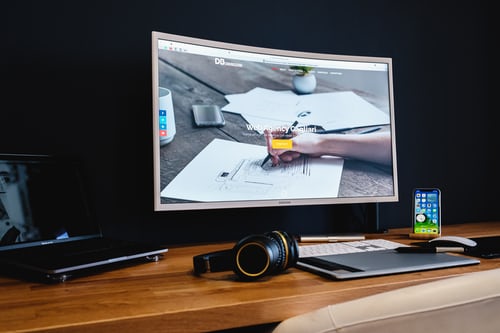As more and more people are getting involved online, it has reshaped how people are being attracted by businesses. The growing popularity of visual elements in websites has pushed the game towards businesses thinking and working on how to please the customers’ eyes. At the same time, the growth in the use of mobile internet has shifted the online marketing mantra towards showing the stuff versus telling the story behind it.
The old adage said that a picture is worth a thousand words is true a thousand years ago and is still relevant today. The shift towards visuals represents the importance of design in getting some traction in marketing. This is best seen in the popularity of social media networks such as Instagram, Facebook timeline, and the newest kid on the block Pinterest.
As people look more than read, it is important that the design of the website catches up with the trend. This will boost the chances of the website to put its message across to its users and ultimately gain traction to convert prospects into sales. The reason we put up websites is to complement our marketing efforts; it will only come into fruition if users are able to stay long enough to catch the website’s drift.

Visual paradigm and the Metro UI concept
We have entered an era on the Internet that the more eye candy you have the better chance you get notices. The Internet today is experiencing a different kind of storytelling; one that has more emphasis on images or pictures rather than text or stories. Content on the Internet has shifted more on the graphic side compared to the traditional text content.
The visual content boom on the Internet is led by a minimalist approach to design. Your message is more likely to be picked up if the design is free from clutter and unnecessary trimmings. Perhaps, this is the KISS version of the graphic world. The intuitive design has contributed immensely to the popularity of certain websites. In fact, the designs have revolutionized the way people look at certain websites. The dynamics of design should have a great impact on the user experience. This will define the brand and ultimately drive more traffic to the website.
These are the reasons why the big players in the industry are no longer just hiring web page creators but web page designers that can deliver a rich and fulfilling user experience.
A great example is the Metro UI on Windows 8 (Microsoft does not refer to it officially as Metro anymore); the minimalist approach is born out of the concept that everything should be pleasing with the eye by using more white spaces. Not just using more white spaces, but making sure every piece of real estate on that page is utilized well. It is like less is more but put a little more on the sides, will you? It is confusing but it will make sense once you made further research on the idea.
Mobile Internet paradigm
As more people use their mobiles to surf the Internet, this will change how we design websites using pre-2000 concepts. We have heard about HTML5 and CSS3; these platforms are able to bring the visual Internet into a much higher plane of existence. The use of Flash is no longer an option, especially in mobile devices (gee, Steve Jobs was right after all), when Adobe pulled the plug on Flash for mobiles. HTML 5 and CSS3 are the next big thing when it comes to delivering visual content to mobile Internet surfers.
We are now seeing the birth of innovation where websites are being designed to bring out a new wave of customer loyalty. The design will no longer be a wallflower but the party host that will bring online marketing to the next level.


